PsychNewsDaily Publishers
100 Summit Drive
Burlington, MA, 01803
Telephone: (320) 349-2484
PsychNewsDaily Publishers
100 Summit Drive
Burlington, MA, 01803
Telephone: (320) 349-2484
Ancient people used innovative methods for timekeeping, including sundials, water clocks, candle clocks, hourglasses, shadow sticks, merkhets, and incense clocks to organize their daily lives.
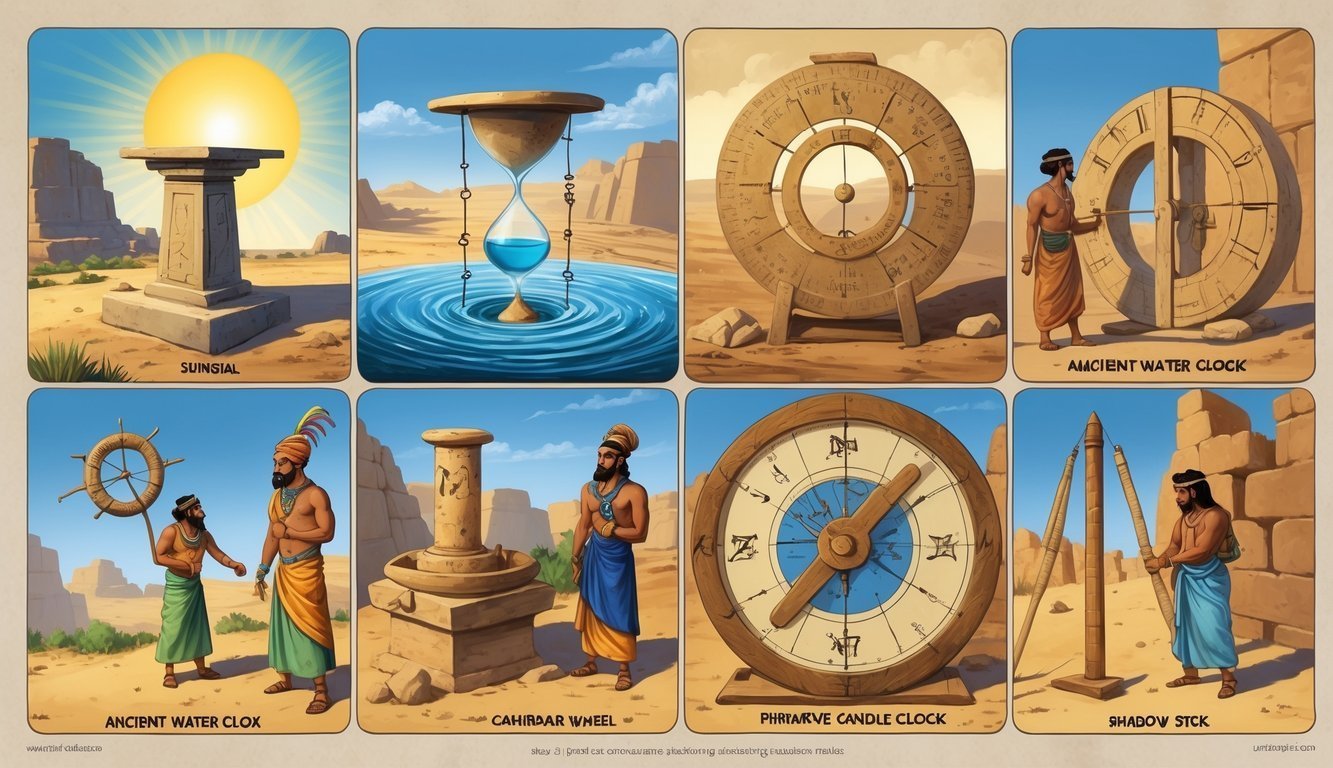
Way before clocks or smartphones, people got creative with timekeeping. They looked at the sun, watched water drip, or even used plants to figure out hours and days. These clever methods helped them organize life and make sense of their world.
Here are seven unusual ways ancient people measured time—some of them might just surprise you. These tricks show just how inventive our ancestors really were, using whatever they had on hand to do something we still need every day.
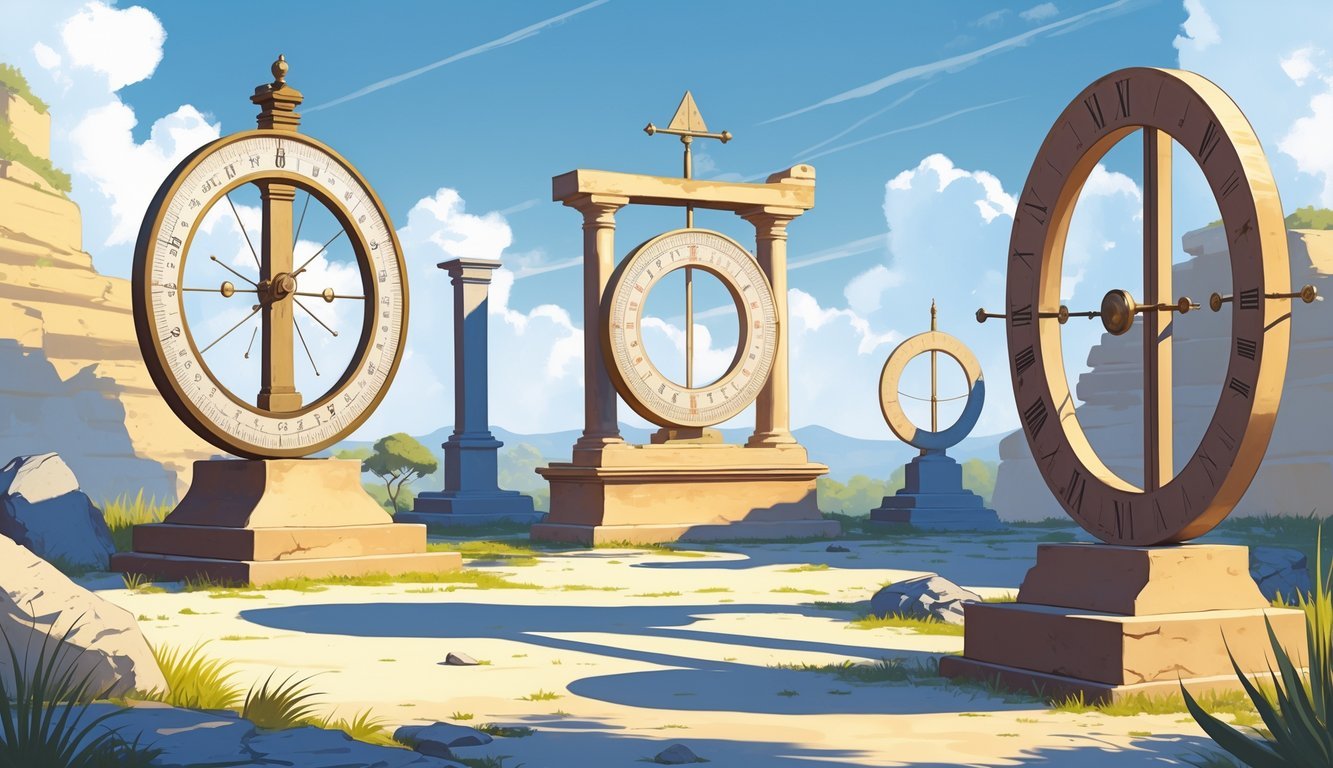
You can actually tell time just by watching a shadow. Ancient folks used sundials to keep track of hours while the sun was up. A stick or object, called a gnomon, would cast a shadow on a flat surface.
As the sun moved, the shadow moved too. People checked where the shadow landed and figured out the time from that.
Sundials let people split the day into chunks. They planned work or rest by following the sun’s light.
Cultures like the Egyptians and Babylonians made sundials in all sorts of shapes. Each one was designed to catch shadows as the sun moved.
Imagine sitting outside, watching the shadow creep along the dial as the day passes. It’s such a simple and clever idea for keeping time.
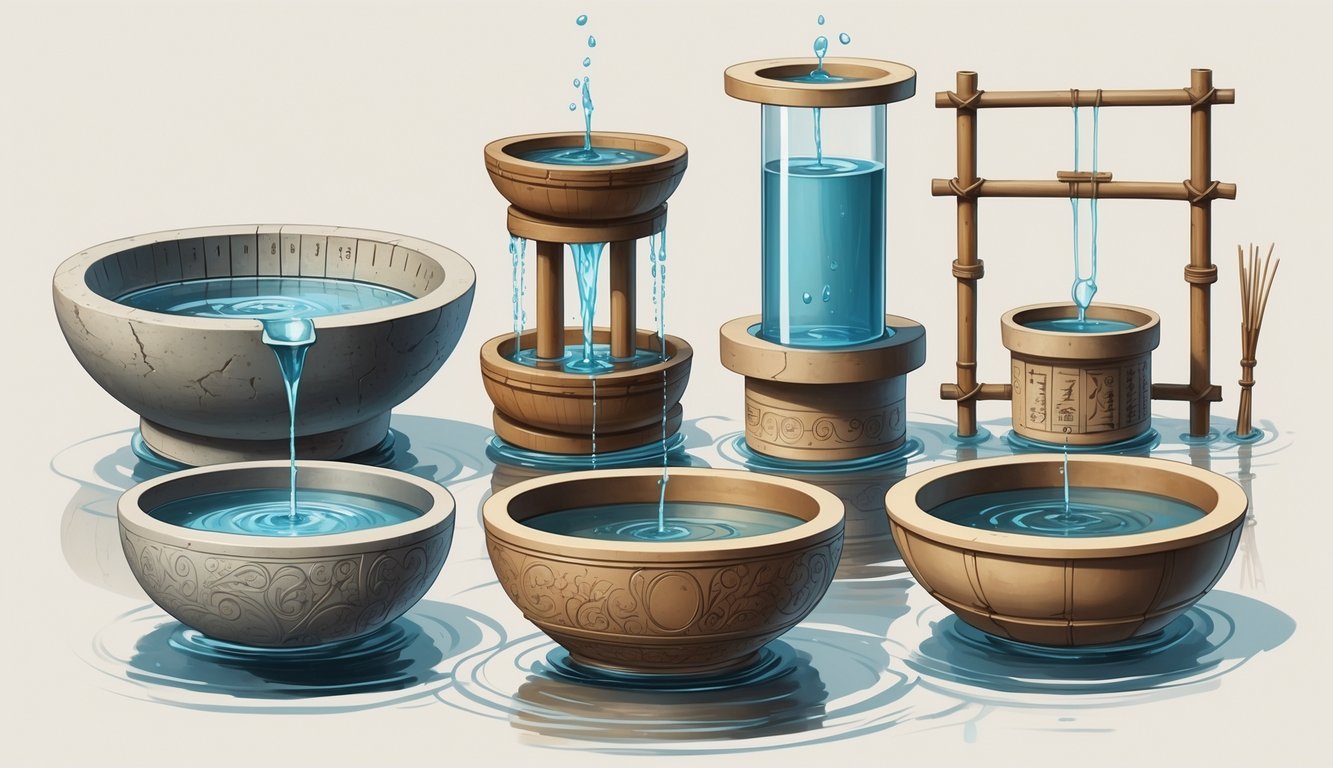
It’s wild to think how people used water to tell time! With water clocks, or clepsydras, they let water flow from or into a container at a steady pace. The changing water level showed how much time had gone by.
You might picture yourself watching the water drop lower and lower to see the hour. Some clocks let water drip out, while others filled up a vessel. That steady trickle helped folks keep track of time before any gears or springs existed.
People used these clocks for all sorts of things—farming, ceremonies, and who knows what else. They basically made timers from nothing but water and a container.

Imagine using a candle to track time. People marked candles with lines, and as the wax melted down, it showed how much time had passed.
Each section burned away in a set amount of time. Maybe an inch melted in 20 minutes. This let people keep track of hours even when it was dark outside.
Candle clocks worked indoors or at night, when the sun and stars were out of sight. They gave people a reliable, no-fuss way to measure time with just a bit of fire.
Sometimes, people even set alarms with candle clocks! They’d put a metal bit inside the wax, and when the candle melted enough, it dropped and made a noise. Not a bad way to wake up or get a reminder, right?
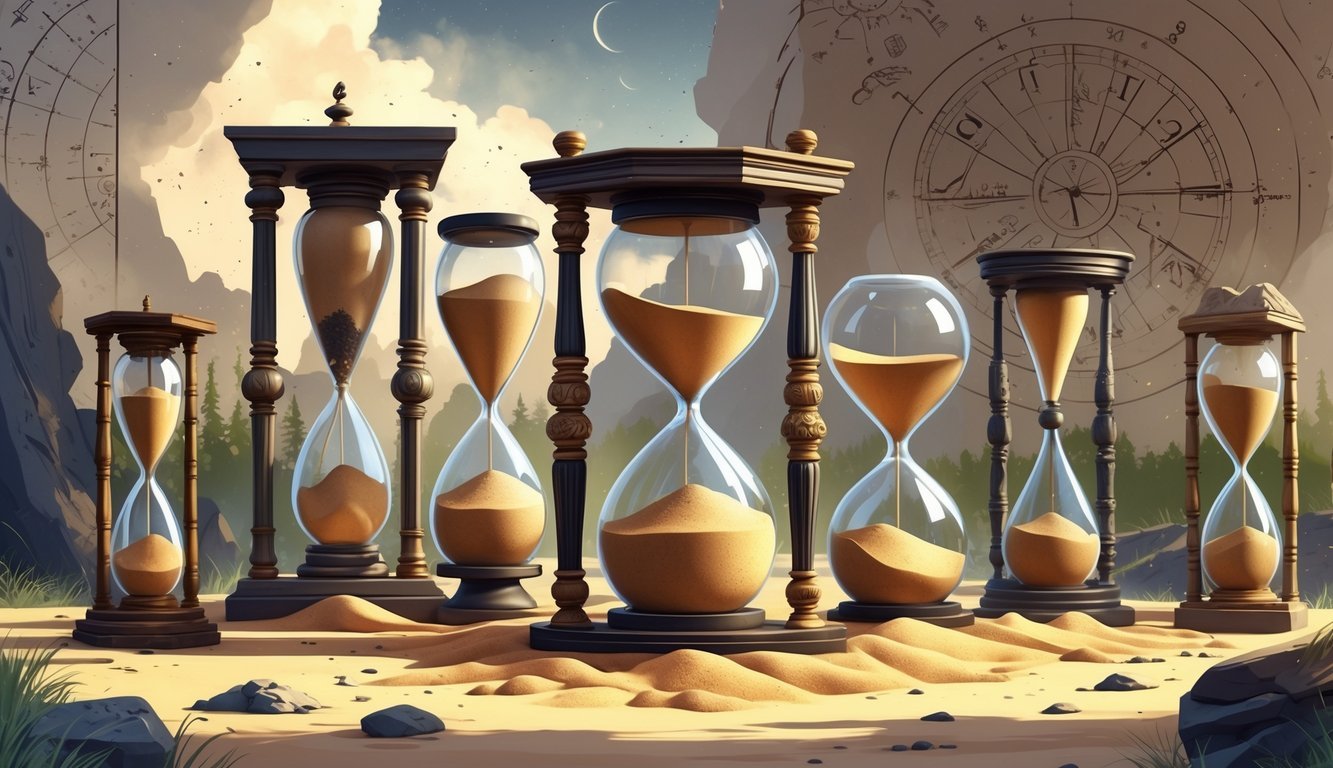
Hourglasses use sand to measure time, letting it flow from one glass bulb to another. It’s such a simple idea, but it helped people keep track of moments long before clocks.
If you watch the sand fall, you can almost feel the seconds slipping away. People used hourglasses for speeches, cooking, or even keeping time on ships.
The sand moves at a steady pace through a tiny hole. This made hourglasses one of the first reliable tools for timing short periods.
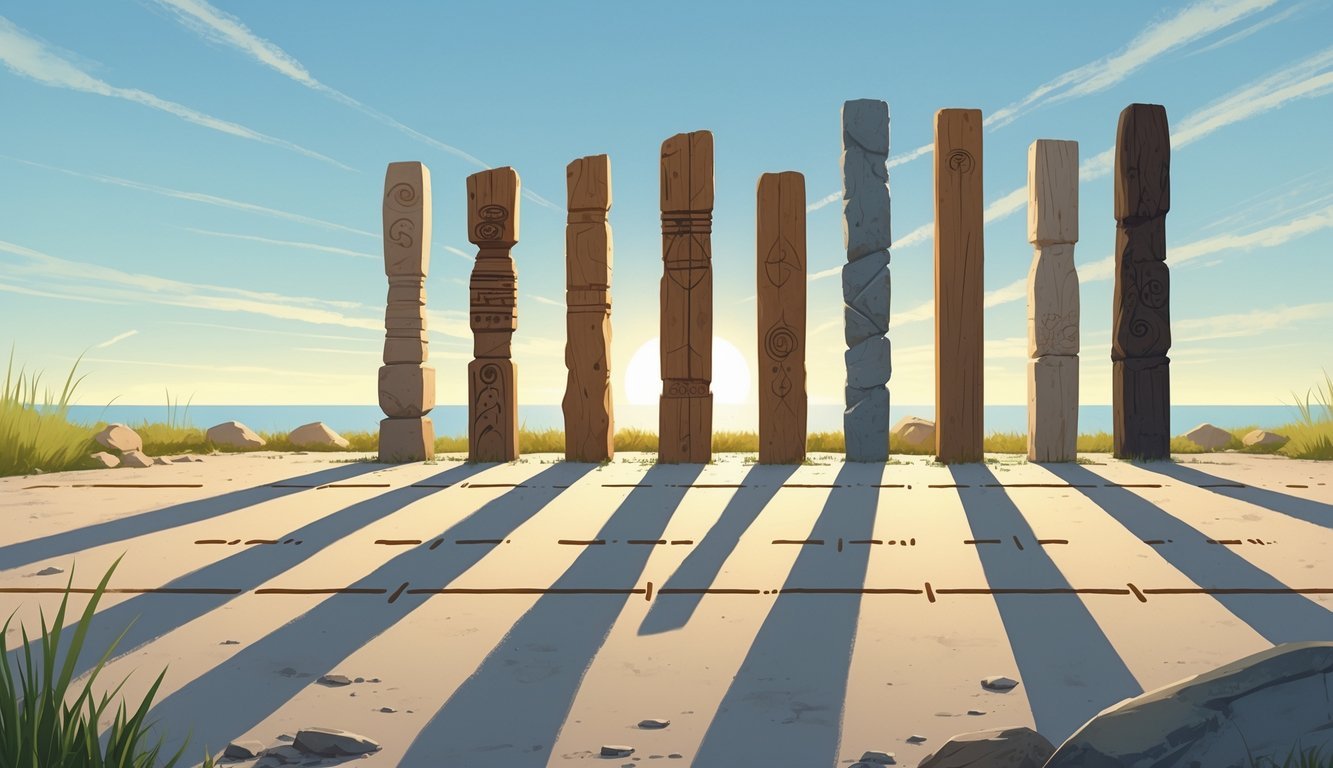
You can just stick a stick in the ground and watch time pass. Shadow sticks work by showing how the sun moves across the sky. In the morning, the shadow is long and points west.
As the sun climbs higher, the shadow gets shorter and points north at noon. That’s when you know the day’s halfway done.
Later, the shadow stretches out again, this time pointing east. People loved this trick because it was so easy—all you needed was a stick and sunlight.
By watching these shadows, you could read the time without any fancy tools. It’s like the sun is telling you a quiet story all day.
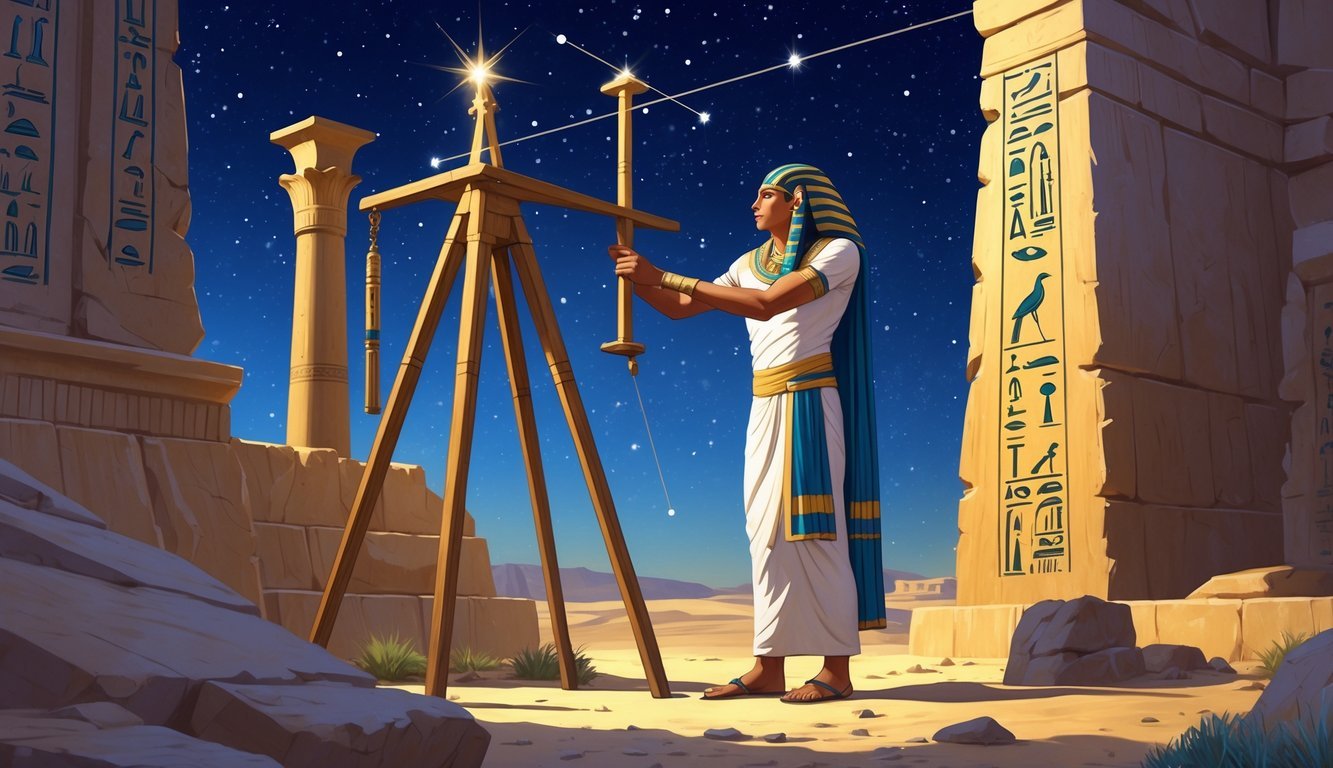
Imagine telling time by watching stars. The merkhet, an ancient Egyptian tool, let people do just that. It used a wooden bar with a plumb line to line up with certain stars.
You’d watch the stars move across the sky to figure out the hours of the night. The merkhet was so accurate that Egyptians even used it to align their buildings.
By tracking ten stars, people split the night into ten hours. This star clock wasn’t just cool—it was super useful for Egyptian life. Using the merkhet, you got to connect with the universe every single night!
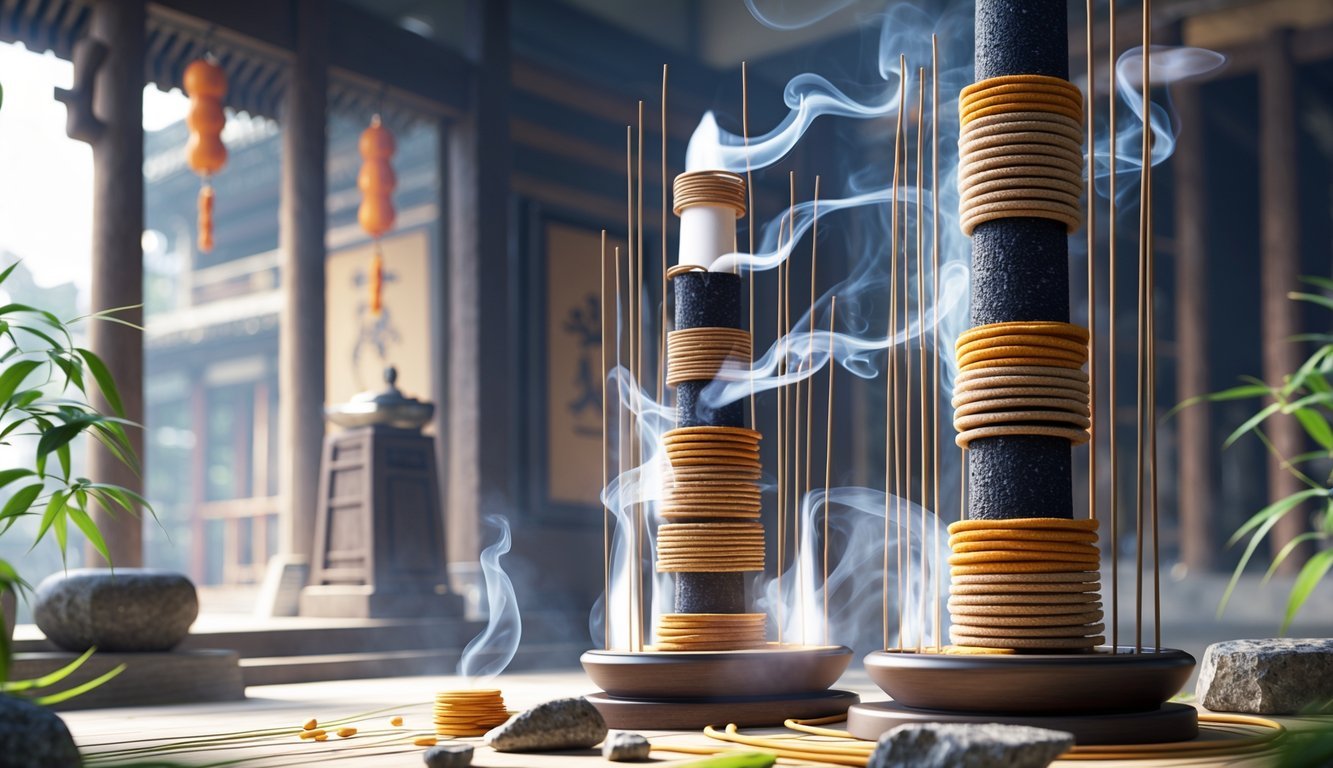
People have measured time with incense clocks for centuries. These clocks burn special sticks or coils of incense at a slow, steady pace.
The incense usually sits in layers or follows winding paths. As it burns, it releases different scents that signal the passing of hours.
Sometimes, folks would arrange the incense in patterns or even little mazes. You could actually watch the glowing ember crawl along the path—kind of mesmerizing, honestly.
Ancient China really embraced this method, and later, Japan and Korea picked it up too. Incense clocks weren’t just for show; they helped with daily routines and kept folks on schedule during night watches.
Smelling time pass and watching the smoke curl up? That’s a pretty creative way to keep track of your day.